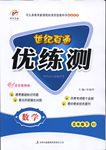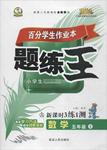题目内容
This is Joy’s bedroom.it’s a small room . He has some pictures.They are on the wall. He also has a desk and a chair in his bedroom.The desk is near the window. His bag and pencil box are on the desk. There are some pencils,a pen,a ruler in the pencil box. He has a baseball and a basketball. They are under the bed.Joy likes playing basketball and baseball. He also has two volleyb alls,but he doesn’t like playing volleyball.
根据短文内容,从A、B、C、D四个选项中选出能填入空白处的最佳选项。(共5小题,每小题2分,满分10分)
【小题1】Joy’s bedroom is _________.
| A.small | B.big | C.old | D.new |
| A.A desk and a chairs | B.Some chairs |
| C.A computer and some games | D.some balls |
| A.on the desk | B.near the window |
| C.under the bed | D.on the bed |
| A.basketball | B.baseball | C.ping-pong | D.volleyballl |
| A.three | B.one | C.two | D.four |
【小题1】A
【小题2】D
【小题3】C
【小题4】D
【小题5】A
解析试题分析:本文通过乔的房间的一张照片对乔的房间进行了描述,包括桌椅的位置,文具的位置已经球类的位置等。
【小题1】根据it’s a small room可知,乔的房间是一个小房间。所以本题选A。
【小题2】根据 He has a baseball and a basketball和 He also has two volleyb alls可知,在他的房间中有一些球。而A中a chairs表示不正确,应该是a chair;故排除AB;而C中的电脑和游戏文中没涉及到。所以本题选D。
【小题3】根据He has a baseball and a basketball. They are under the bed可知,棒球和篮球在床下面。所以本题选C。
【小题4】根据but he doesn’t like playing volleyball可知,乔不喜欢打排球。所以本题选D。
【小题5】根据There are some pencils,a pen,a ruler in the pencil box可知,文具盒中有3种文具。所以本题选A。
考点:本题考查日常生活类文章。
点评:完成本题需要仔细阅读文章,理清文中提到的物品,以及它们的位置。做题时一定要仔细,如第2小题,如果不注意就可能选择A。另外,在做本题时应该照顾上下文之间的关系。

 世纪百通主体课堂小学课时同步达标系列答案
世纪百通主体课堂小学课时同步达标系列答案 世纪百通优练测系列答案
世纪百通优练测系列答案 百分学生作业本题练王系列答案
百分学生作业本题练王系列答案